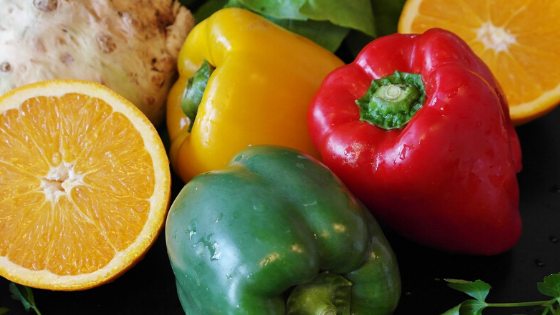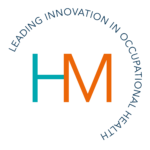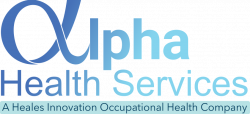Not to be confused with the Skittles tagline, the phrase “eat the rainbow” is used to advise people to consume a variety of colourful fruit and vegetables.
This tip is used to get people out of the routine choices of fruit and veg people fall into, we often figure out what the family likes…and stick to it. However, ensuring you have a colourful plate could be the easiest way of taking in a range of vitamins and minerals.
Different colour fruit and vegetables all contain different nutrients holding a range of benefits.

Green
Green vegetables such as broccoli, cabbage, brussels sprouts, kale and pak choi are all sources of sulforaphane and glucosinolate, they also contain lutein and zeaxanthin which research has suggested may help prevent and slow the progression of age-related macular degeneration. Sulforaphane is thought to help against certain cancers and against blood vessel damage, however more research is needed in this area.
Avocados, celery, apples, asparagus, courgettes, cucumbers etc.
Blue or purple
Blue or purple fruit and vegetables such as blackberries, red cabbage and aubergines contain the powerful antioxidants called anthocyanins, which give them their colour. Anthocyanins may have a role in protecting cells from damage, although these positive effects are yet to be seen in humans.
Beetroot, purple lettuce and cabbage are high in nitrates which is being researched into its effectiveness in helping to reduce blood pressure.
Blackberries, red cabbage, aubergines, purple grapes, blackcurrants etc.
Red
Red fruit and vegetables contain antioxidants including ellagic acid ( found in raspberries, pomegranate and strawberries), lycopene (found in tomatoes) and anthocyanins (found in red berries including strawberries). Lycopene gives red fruit their colour and is thought to have antioxidant properties that may help reduce the risk of cardiovascular disease as well as helping to reduce blood pressure and cholesterol.
Red peppers, tomatoes, strawberries, watermelon ect.
Orange and yellow
Orange fruit and vegetables are high in carotenoids such as alpha-carotene and beta-carotene. Beta-carotene, that gives orange and yellow fruits and veg their colour, is converted into vitamin A in the body which helps us to make hormones and keep our eyes healthy (hence the saying “carrots help you see in the dark”). It has also been suggested that vitamin A (with vitamins C and E) could help prevent heart attacks.
Oranges, grapefruit, carrots, lemons, mangos etc.
Yellow
Yellow fruit and vegetables contain carotenoids including beta-carotene and beta-cryptoxanthin. Like with the orange fruit and vegetables, beta-carotene gives yellow foods their colour. Foods rich in the antioxidant beta-cryptoxanthin include sweetcorn, peach and papaya. Beta-cryptoxanthin can also be converted into vitamin A in the body so offers the same health benefits.
Lemons, yellow peppers, honeydew melons, butternut squash.
White or beige
White or beige fruit and vegetables such as onion and mushrooms contain anthoxanthins that give them their cream colour. Some studies have suggested that anthoxanthins may help to reduce the risk of cardiovascular disease and inflammatory conditions such as arthritis. Parsnips, mushrooms and bananas are also rich in the mineral potassium, important for muscle function including the heart
Garlic, celeriac, bananas, artichokes, mushrooms, onions, turnips, white peaches etc.

There is no research than can suggest any one colour of fruit and vegetables is more important than any others so it is important to ensure you are including a range of colours in your diet.






